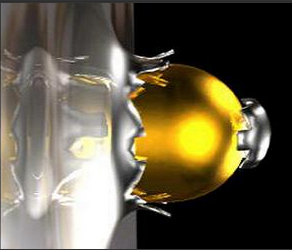With a pushbelt CVT, the whole drivetrain including the engine of a passenger car can operate in an optimal state at any time. Dynamic simulations of the system have been investigated by Bosch Transmission Technology B.V. and the Institute of Applied Mechanics of the Technische Universität München. The underlying spatial transient mathematical model is challenging because of numerous contacts (~5500) and a large degree of freedom (~3500). In order to avoid high numerical stiffnesses and to encourage an efficient as well as a robust numerical treatment, a nonsmooth contact description using time-stepping schemes has been chosen and implemented in MBSim. Validation with measurement data has shown that a new level of detail in CVT modeling has been achieved.


